
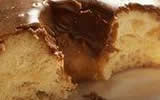
![]()
::: postdoc fellowships
::: senior fellowships
::: resident fellowships
::: associateships
![]()
being here
::: visiting
::: the last donut
::: photo album
::: center home >> being here >> last donut? >> 19 September 2006 |
Tuesday, 19 September 2006 It seems straightforward enough. Our resident Galileo expert, Paolo Palmieri, is giving us a talk on Galileo. He is a first rate historian of science, deeply steeped in Galileo's publications and manuscripts. Indeed he seems to read them with the same energy and excitement that the rest of us save for news of modern breakthroughs in science. So you would expect a talk laden with images of yellowed fragments covered in Galileo's scrawl. Someone expecting that does not know that Paolo's background is in aeronautical engineering and that, before losing himself in history of science, he worked as a control engineer with Ferrari racing cars. He's a hands-on engineering tinkerer and he's carried those sensibilities with him, right into the ivory tower that is the Cathedral of Learning. If he really wants to understand Galileo's experiments, Paolo decided, he has to do them himself. Early on he spent a lot of time watching water slosh about in huge basins. That is what he surmised Galileo was doing when he developed his theory of tides; and doing the same thing, Paolo's engineering wit knew, is the only reliable way to find what Galileo saw. Galileo is famous for his pendulum experiments. The result of legends in the "isochrony of the pendulum," which is a sameness of period, when, say, you change the weight of the pendulum bob. That, by modern theory, could not be had in quite the way Galileo said. Modern theory assures us that the isochrony fails for anything other than very small amplitudes of oscillations. So, historians began to wonder, perhaps Galileo didn't really do the experiments at all? Perhaps he was the Platonist some like to see in him, finding truths of nature by a priori argumentation.
The emphasis has long passed from whether Galileo did the experiments to how much better can we understand what Galileo did by repeating his experiments. Paolo is soon offering morals. The early Galileo conceived science as the search for causes. After years of these experiments, the later Galileo has developed a rather different view and sees his science as exposing the mathematical order of nature. Whether that transition could be attached to his experiments became a topic of heated debate in discussion. The questions kept coming and the queue got longer and longer, so I eventually abused the privilege of chair and put myself in it. It was the only way I could ask my question about just how Paolo and his student Eric Hatleback had opened the hole in the bucket to let the water out without disturbing the beam's delicate equilibrium.
If you want to see Paolo's videos and read more, there's a website, www.exphs.org John D. Norton Paolo Palmieri
|
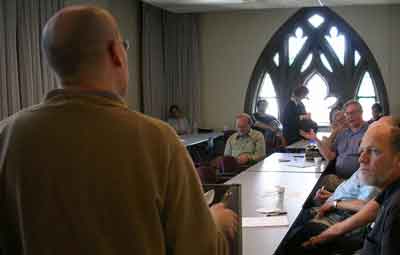
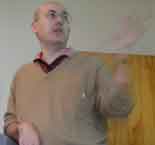
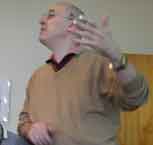
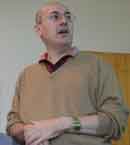
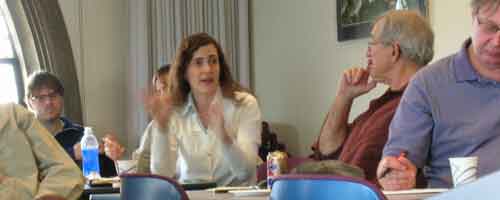
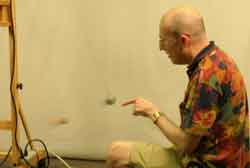
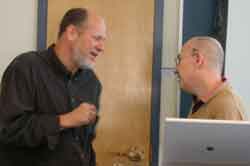 How intriguing to see delicate points of engineering debated in an historical talk about Galileo! What had now fully grasped my imagination was the spectacle of seeing a fledgling branch of history of science take its first faltering flights. This was what Paolo calls "experimental history of science" and I'm looking forward to seeing a lot more of it.
How intriguing to see delicate points of engineering debated in an historical talk about Galileo! What had now fully grasped my imagination was the spectacle of seeing a fledgling branch of history of science take its first faltering flights. This was what Paolo calls "experimental history of science" and I'm looking forward to seeing a lot more of it.